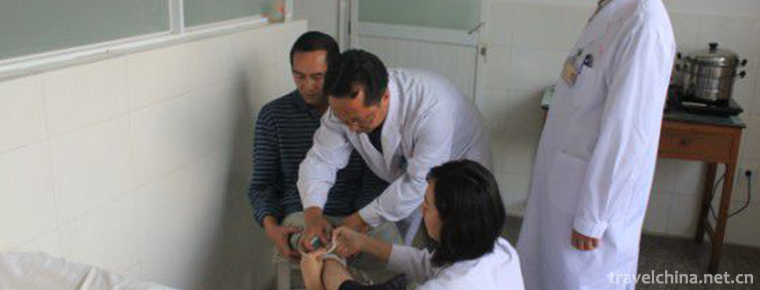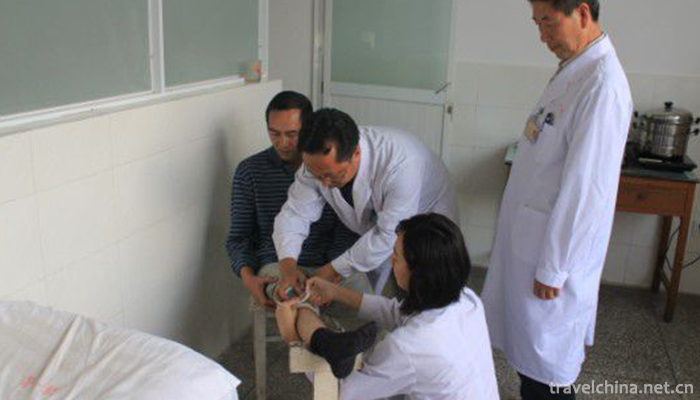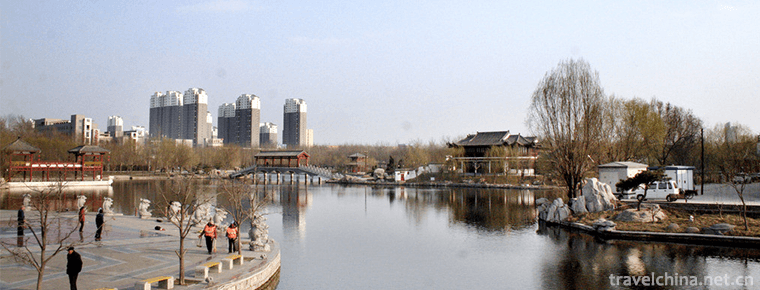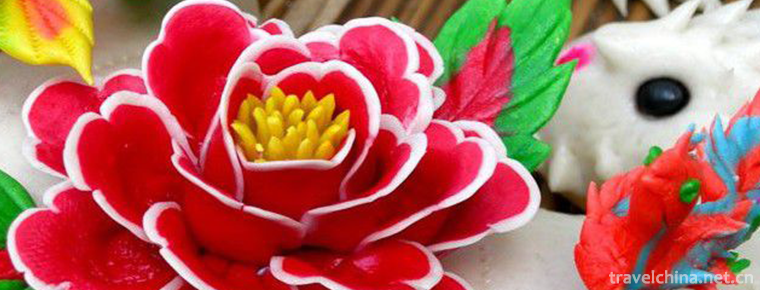2019-01-08

- By ChinaWiki.net
- Chinese Edition
- 2019-07-12
Yi Medicine Water Plaster Therapy of Yi Medicine
Yi medicine is the summary and wisdom crystallization of the Yi people's long-term struggle against disease, and it is an important part of the great treasure house of Chinese medicine. There are thousands of Yi medicine, including animal medicine, mineral medicine and botanical medicine, among which botanical medicine and animal medicine are widely used. In 2008, it was declared as a cultural heritage.
brief introduction
The use of animal medicine in Yi medicine originated from the ancestors of the Yi nationality in the primitive society. The ancient Yi language records 59 diseases, 231 Yi medicines, 226 prescriptions and prescriptions. There are 92 kinds of animal medicine in Shuangbaiyi Medical Book in the middle of 16th century, accounting for 1/3 of the whole book. Qisu Shu, written in Jiajing, Ming Dynasty (1566 A.D.), is 12 years earlier than Li Shizhen's Compendium of Materia Medica. It is a summary of Yi people's medical experience before the 16th century. The proportion of animal medicine recorded in the Book of Medicine Presentation of the Yi Nationality in the early Qing Dynasty was larger, accounting for 92.8%. It can be seen that the use of animal medicine by the Yi Nationality was relatively high.
Since 1978, Yunnan, Sichuan and other places have carried out the investigation of Yis'botanical medicines respectively. 102 species have been sorted out in Chuxiong Yi Autonomous Prefecture, 23 species have been sorted out in Emshan County, 105 species have been sorted out in Liangshan Yi Autonomous Prefecture and a monograph on Yis' botanical medicines has been compiled. "Yunnan Pharmaceutical Standards" contains eight kinds of Yi medicine, and "Chinese Ethnic Pharmacology" contains about 15 kinds of Yi medicine names and medicinal experience.
Yiyi herbal medicines are mostly fresh medicines. In some residential areas (such as Liangshan), there is no accurate dose, and there are many single medicines used. Common uses include mashing, rubbing, external application, chewing, boiling water for oral use and stewed chicken for oral use. The ancestors of the Yi nationality invented the technology of salt making very early. The use of salt has exerted a great influence on the life of the Yi people and the medicine of the Yi people. They cleaned the wounds with saline water and fed the animals. In addition, the Yi people have a long history of using wine in medicine. As early as 43 A.D. (the nineteenth year of Emperor Guangwu's founding of Wu), one of the Yi ancestors living in Liangshan, had brewed poisonous wine and used it for war. In daily life, the Yi people have been hospitable and fond of wine since ancient times. Liquor has become an indispensable drink in the life of the Yi people.
Relevant information
Yunnan Yi medicine has a history of more than 1000 years. The Book of Yi Medicine of Ming Dynasty, which was found in Shuangbai County, Ming Dynasty in 1979 in 1566, is the earliest monograph of Yi medicine. The Yi medical theory of "two qi" (clear gas, turbid gas), five viscera (heart, liver, spleen, lung, kidney), five body (blood, bone, heart, muscle, meat) and five elements (water, gold, fire, wood, earth) explain the physiological and pathological phenomena of the human body. There are two kinds of methods for Yi's treatment of diseases: internal treatment and external treatment. The internal treatment mainly takes compound preparations, while the external treatment includes application, fumigation, external washing, excision, bleeding, massage, cupping and other drugs and non-drug therapies. Yi doctors are good at treating injuries caused by falls. Powders, tinctures and alcoholics are the most commonly used. There are about 1189 kinds of commonly used medicines, including 871 kinds of botanical medicines, 262 kinds of animal medicines, 56 kinds of minerals and other medicines. The Yi medicine monographs translated and published in Yunnan Province include Yi Medicine Chronicle, Yi Medicine in Yuan Dynasty, Yi Medicine, Yi Medicine in Shuilaoshan, Yi Medicine in Shuilaoshan and Materia Medica in Shuilaoshan. "Yunnan Pharmaceutical Standards" has included 7 Yi medical prescriptions and 11 kinds of medicinal materials.
The famous "Yunnan Baiyao", "Artemisinin A", "Haitang of Kunming Mountain", "Erigeron breviscapus" and "Yangwei Jiedu Capsule", "Lidan Jiedu Capsule", "Zhixie Capsule" and "Cervical Spondylosis Capsule" developed by our State Hospital of Traditional Chinese Medicine; the "Yixinkang Capsule" and "Fruit Coat Capsule" produced by Longfa Pharmaceutical Co. Kechuan Granules; Yanshuxin, Jingqi Shenyao and Compound Xianhe Enteritis Capsules produced by Dayao Jinbi Pharmaceutical Factory; Yizhixue and Yizhitong developed by Yao'an County Hospital; 626 Detoxification Capsules developed by Kunming Municipal Drug Rehabilitation Institute are the treasures of Yi medicine.

Ask a Question
Your email address will not be published.



0 Questions